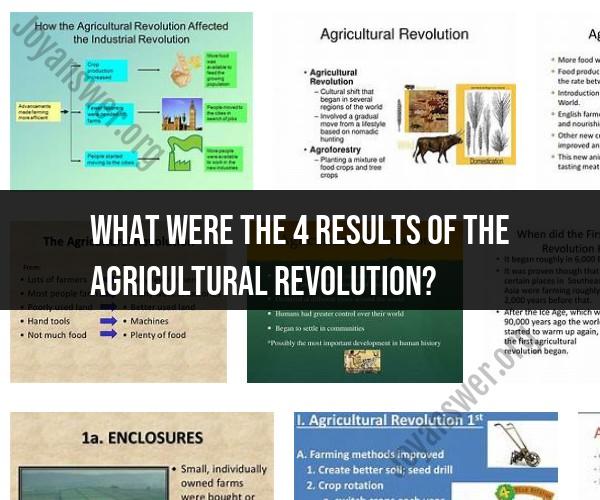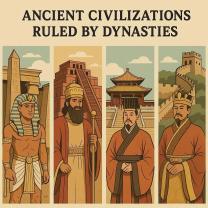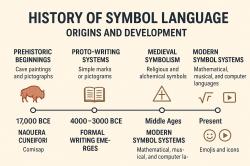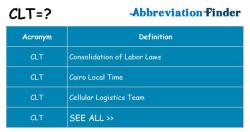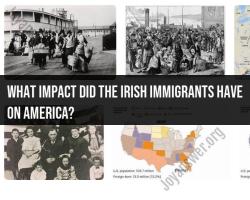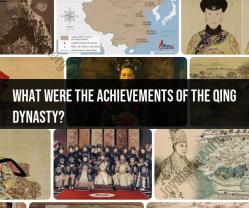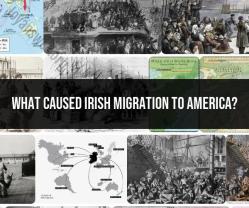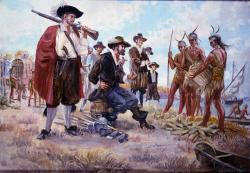What were the 4 results of the Agricultural Revolution?
The Agricultural Revolution brought about several transformative results and outcomes that reshaped human society. While there are more than four significant results of this revolution, here are four key results that had a profound impact on society:
Surplus Food Production: The Agricultural Revolution enabled communities to produce surplus food beyond what was immediately needed for survival. This surplus food could be stored and used during times of scarcity, reducing the risk of famine. The ability to generate surplus food was a pivotal result of agriculture and had a direct impact on population growth and stability.
Sedentary Lifestyle and Permanent Settlements: Prior to agriculture, human societies were nomadic, moving from one place to another in search of food. With agriculture, people could settle in one location to cultivate crops and raise domesticated animals. This shift from a nomadic lifestyle to a sedentary one led to the development of permanent settlements, including villages and later, cities. The establishment of permanent settlements was a foundational result of the Agricultural Revolution.
Specialization of Labor and Occupational Diversity: The surplus food produced through agriculture allowed some individuals within a community to specialize in occupations other than farming. This specialization gave rise to a diverse range of professions, including artisans, traders, religious leaders, administrators, and more. This diversification of occupations marked a significant social and economic development.
Population Growth and Urbanization: With surplus food and the stability provided by agriculture, populations began to grow significantly. Larger communities could be supported, leading to increased population density. Over time, some of these settlements evolved into urban centers and cities. Urbanization, characterized by the growth of cities and the emergence of complex societies, was a direct result of the Agricultural Revolution.
These four results of the Agricultural Revolution were interconnected and had far-reaching implications for the development of human societies. The surplus food production fueled population growth, while the sedentary lifestyle enabled permanent settlements and urbanization. Specialization of labor contributed to occupational diversity and the emergence of complex societies with hierarchical structures.
It's important to recognize that the Agricultural Revolution was not a uniform or instantaneous process but occurred independently in various regions of the world over thousands of years. This transformative period laid the foundation for the development of early civilizations and the complex societies that followed, shaping human history in profound ways.
The Agricultural Revolution was a period of rapid change in human history that marked the transition from hunter-gatherer societies to agricultural societies. It began around 10,000 years ago in the Middle East and spread to other parts of the world over the next few thousand years.
The Agricultural Revolution had a profound impact on human societies in a variety of ways, but four key outcomes stand out:
1. Increased food production
The Agricultural Revolution allowed humans to produce more food than they could through hunter-gathering. This was due to a number of factors, including the domestication of plants and animals, the development of new agricultural tools and techniques, and the development of irrigation systems.
The increase in food production led to a number of other changes in human societies, including population growth, the development of cities and civilizations, and increased social and economic inequality.
2. Population growth
The Agricultural Revolution allowed humans to support larger populations. This was due to the increase in food production, as well as the development of new social and economic systems, such as land ownership and trade.
The population growth that resulted from the Agricultural Revolution was one of the most significant events in human history. It led to the development of cities and civilizations, as well as increased social and economic inequality.
3. Development of cities and civilizations
As human populations grew, they became more concentrated in certain areas. This led to the development of cities and civilizations.
Cities and civilizations allowed humans to develop new technologies, new forms of government, and new cultural institutions. They also allowed humans to trade goods and ideas with other cultures.
4. Increased social and economic inequality
The Agricultural Revolution led to increased social and economic inequality. This was due to a number of factors, including the privatization of land and the development of new technologies that favored the wealthy.
The increased social and economic inequality that resulted from the Agricultural Revolution is still felt today. It is one of the major challenges that human societies face today.
Conclusion
The Agricultural Revolution was a watershed moment in human history. It had a profound impact on human societies in a variety of ways, including food production, population growth, the development of cities and civilizations, and social and economic inequality.
The effects of the Agricultural Revolution are still felt today. It is a period that continues to shape the world we live in.
